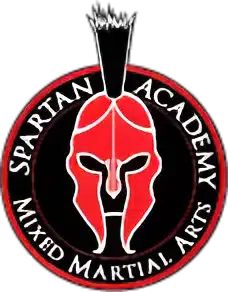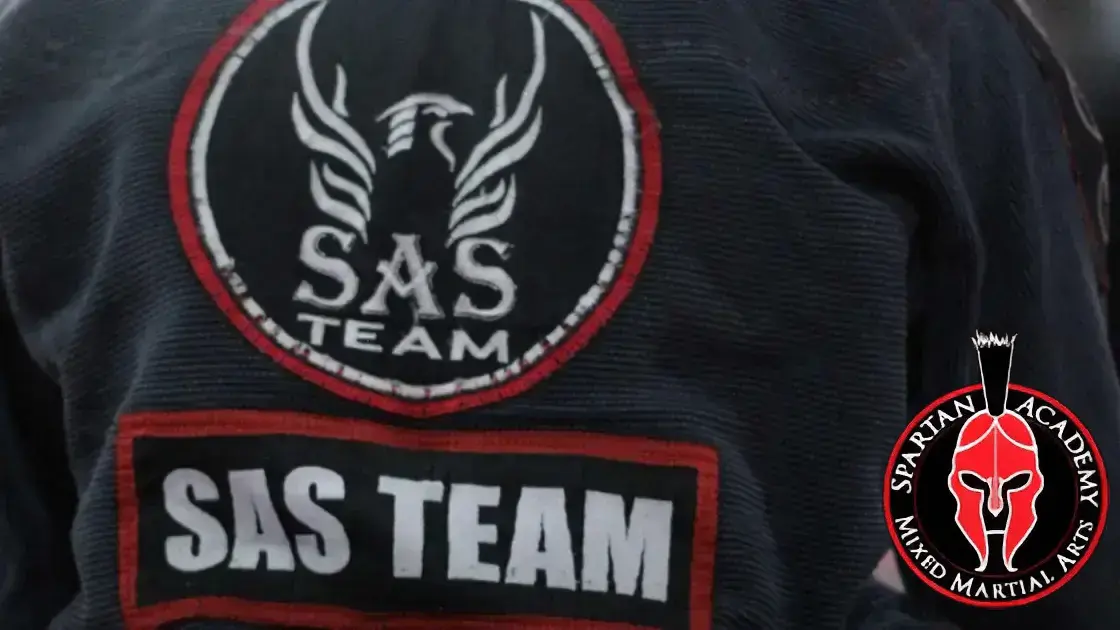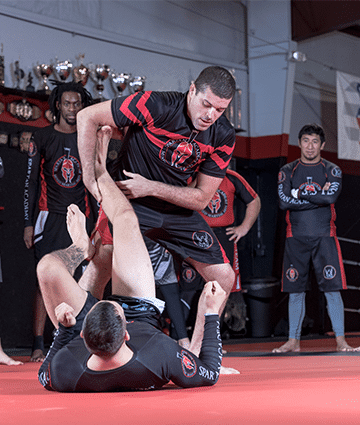“As I step onto the mat and get ready for another intense jiu jitsu session at Spartan Academy, I can’t help but be amazed by the complexity and beauty of the techniques we use. Each move has its own unique name, a name that carries a story, a history, and a wealth of knowledge within it.”
Professor Guybson Sá
Jiu jitsu hold names are like hidden treasures waiting to be discovered, opening the door to grappling mastery. They are the key to unlocking a whole new level of skill and understanding.
But where do we begin? How can we navigate this vast world of jiu jitsu holds and make sense of it all? Well, my friends, that’s exactly what we’re going to explore together.
Table of Contents
ToggleUnderstanding Jiu Jitsu Hold Names
Understanding the names of Jiu Jitsu holds is crucial for anyone practicing Brazilian Jiu Jitsu (BJJ). These hold names serve as the foundation for learning and applying various submission holds and control techniques. They aren’t just random labels, but rather specific techniques that allow practitioners to manipulate and control their opponents.
For example, one common hold is the back submission hold, where you trap your opponent’s arm and apply pressure to their neck or spine. Another technique is the joint lock, which involves hyperextending your opponent’s arm, causing intense pain and forcing them to submit.
Mastering Common Jiu Jitsu Holds
If you want to excel in Brazilian Jiu Jitsu (BJJ), it’s crucial to master the common holds used in this martial art. These holds allow you to control your opponent and effectively apply submissions.
Let’s take a look at three important holds that you should focus on:
Rear Naked Choke:
This submission hold is executed from the back position. To execute it, you wrap your arm around your opponent’s neck and secure your bicep against their carotid artery. By doing so, you can cut off their blood circulation and force them to submit.
Side Control:
Achieving side control involves pinning your opponent on their back while maintaining a dominant position. From here, you have several options. You can apply various submission holds on their arms or execute transitions to advance your position.
Mount Position:
When you mount your opponent, you sit on their torso with your legs straddling their body. By hooking your legs in a crab-like position, you can control your opponent’s movement and limit their escape options.
Advanced Jiu Jitsu Holds for Grappling Mastery
Now let’s dive into advanced jiu jitsu holds for grappling mastery. These techniques are designed for higher-level practitioners who want to gain control and secure submissions from various positions.
Advanced jiu jitsu holds require a deep understanding of leverage and pressure application, allowing you to manipulate your opponent’s limbs and body with precision. These holds cover a wide range of techniques, including arm locks, chokeholds, leg locks, shoulder locks, and unique submission holds.
Mastering these advanced holds requires precise execution, perfect timing, and a thorough understanding of your opponent’s body mechanics and reactions. As a black belt practitioner, these advanced holds will take your grappling skills to the next level and give you a strategic advantage on the mat.
One example of an advanced hold is the rear naked choke, where you secure your opponent’s neck with your forearm and apply pressure to render them unconscious.
Applying Jiu Jitsu Holds in Real-Time Sparring
When it comes to applying Jiu Jitsu holds during real-time sparring, timing and positioning are absolutely crucial. To be effective in executing these holds, it’s important to adapt your technique to your opponent’s movements and reactions. Visualize yourself successfully locking in the hold as you manipulate your opponent’s positioning on the mat. Leverage your understanding of leverage and pressure to gain control and submit your opponent.
Imagine the precise moment when you trap your opponent’s elbow, hyperextending it with precision. This technique is a powerful way to gain control and potentially force a submission. Another effective hold is when a wrestler sits on top of their opponent, maintaining control and preventing any counterattacks. This position allows you to dictate the pace and direction of the fight.
It’s important to study and practice the techniques used in Brazilian Jiu Jitsu and mixed martial arts, as timing and positioning are vital for success. Transitioning seamlessly between different holds is key to keeping your opponent off-balance and maintaining control throughout the match.
With dedication and practice, you’ll be able to dominate your opponents with your expertise in applying Jiu Jitsu holds during real-time sparring. Remember to stay focused, adaptive, and always be aware of your opponent’s movements.
Conclusion About Jiu Jitsu Holds Names
The objective of this article is to provide a detailed explanations and easy-to-follow illustrations of various hold names, which can greatly enhance your knowledge and understanding of grappling techniques. Whether you’re looking to master the basics or progress to more advanced holds, this guide is sure to help you improve your skills on the mat and achieve grappling mastery.
If you’re interested in putting your newfound knowledge into practice, I highly recommend checking out Spartan Academy MMA. Located in Columbia, South Carolina, USA, Spartan Academy MMA offers a wide range of martial arts classes, including Brazilian Jiu Jitsu, Muay Thai, Kickboxing for all ages and levels, and MMA for children and teenagers. They also offer strength and conditioning classes for all ages and skill levels. Best of all, we offer a free trial class, so you can see if it’s the right fit for you.
Don’t miss out on the opportunity: book your free trial class and be part of the Spartan Academy MMA family!
Attention!
The purpose of this article is solely informational and should not be used to encourage self-training or replace the guidance of qualified martial arts instructors. In this regard, we emphasize that a certified Jiu-Jitsu instructor is the only professional qualified to teach and supervise proper techniques and training. Therefore, always seek guidance from a certified instructor!
Do not attempt complex maneuvers without proper supervision. All martial arts techniques should be practiced with safety in mind and in the presence of a qualified professional.
Should you require more information about Jiu-Jitsu techniques or wish to inquire about training sessions, please contact us. We have qualified experts ready to assist you.





